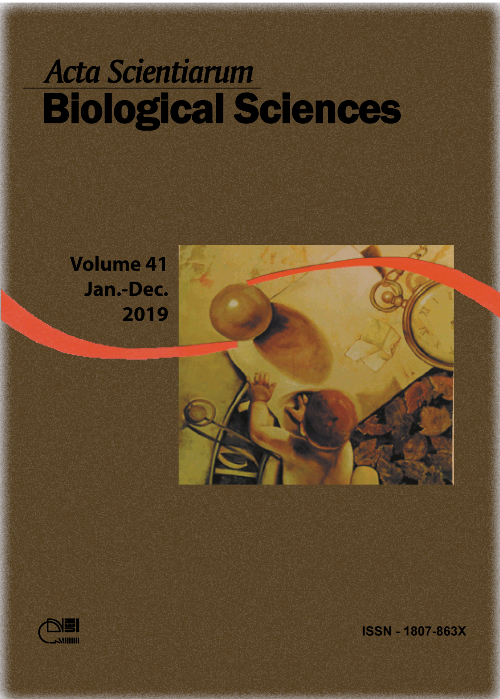Phenology and dry mass production of <i>Urochloa plantaginea</i> and <i>Urochloa platyphylla</i> submitted to different water quantities in the soil
Resumo
The genetic variability and genetic versatility of plants belonging to Poaceae provide morphophysiological responses that allow these individuals to adapt to environmental changes, especially in relation to soil moisture. Urochloa plantaginea and U. platyphylla are grasses typical of dry environment, also found as weeds in rice fields, where there are high amounts of water in the soil. The objective of this work is to analyze the development of these two species in different environments, subjecting them to three different amounts of water in the soil. Morphological parameters were analyzed in order to verify and quantify which suffered alteration with respect to water variation. Caryopsis of the two species were collected in a commercial irrigated rice crop. Seeds were sown in pots containing a substrate-sand system, and housed in a greenhouse, where during the experiment the control of different moisture contents (shallow water table, 100% of field capacity and 50% of field capacity) took place. Weekly evaluations were carried out according to the parameters analyzed. The following parameters were evaluated: duration of the vegetative and reproductive life cycle, number of the inflorescences per plant, number of branches per inflorescence, number of spikelets per branch, number of seeds per plant, and dry mass production. The U. plantaginea cycle had shorter duration under the shallow water table, while for U. platyphylla the shorter duration was under the condition 50% of field capacity. Both species produced higher dry mass of shoots under the condition of 100% of field capacity. The main responses observed for both species, due to the flooding, were the change of the cycle, reduced dry matter production, and reduced seed production.
Downloads
DECLARAÇÃO DE ORIGINALIDADE E DIREITOS AUTORAIS
Declaro que o presente artigo é original, não tendo sido submetido à publicação em qualquer outro periódico nacional ou internacional, quer seja em parte ou em sua totalidade.
Os direitos autorais pertencem exclusivamente aos autores. Os direitos de licenciamento utilizados pelo periódico é a licença Creative Commons Attribution 4.0 (CC BY 4.0): são permitidos o compartilhamento (cópia e distribuição do material em qualqer meio ou formato) e adaptação (remix, transformação e criação de material a partir do conteúdo assim licenciado para quaisquer fins, inclusive comerciais.
Recomenda-se a leitura desse link para maiores informações sobre o tema: fornecimento de créditos e referências de forma correta, entre outros detalhes cruciais para uso adequado do material licenciado.






1.png)




3.png)













